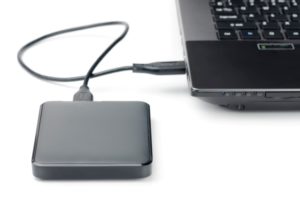
A backup disaster recovery plan can ensure that, if you’re affected by a computer virus, your information will remain safe.
When you’re in the workplace, you always need to have a plan for combating viruses. Hackers are becoming tricker in their tactics, and it’s imperative that you’re outwitting them. In fact, viruses and other malicious software, should always be a cause for concern in the workplace. While it’s true that those aren’t the only disasters which may occur, they certainly leave the most lasting impact. For example, let’s say there was an unexpected power failure, or liquid spilled onto your keyboard. While these are damaging, at worst, you might simply lose any unsaved files.
With computer viruses however, some of these erase all the data on your hard drive, and make your device completely inaccessible. What is the best way to deal with these attacks? First of all, you need to have a disaster recovery plan. That way, even if your device does become infected, all your files are easily recoverable. However, just because you have a backup disaster recovery plan, that doesn’t mean you should seek out computer viruses, or be laid back about your security. We’ll get back to this discussion, but in the meantime, let’s look at the best way to actually combat these attacks from cybercriminals. After all, a recovery action plan is one thing, but you want to deal with these threats directly as well.
Anti-Virus Software
Even the most inexperienced businesses know that anti-virus software is the most common way to deal with…well, viruses. Whether you’re using McAfee or Kasperky Security, network protection is great for preventing your computer from getting infected. Without security on your computer, the Internet is a dangerous minefield. One wrong move, and you could be taken out.
However, having anti-virus software for your company isn’t enough; you need to have the right security as well. For example, have you installed the most recent software available, or have you been using the same program for years? Many hackers look for security holes and vulnerabilities in outdated software. If you’re not using the latest anti-virus software, for example, it might be easier for them to attack you.
One thing that makes these programs great isn’t just the network protection, but it secures you while you’re on the Internet as well. Many programs now have safe features which block malicious pop-ups on websites, and even warns you of sites that are dangerous. If you make a careless mistake and go to the wrong site, for example, you’ll be prevented from going any further. Overall, anti-virus software is one of the most important and basic tools for protecting your business.
Now that we’ve discussed the basics for protecting your business, let’s get back to having a disaster recovery plan. It may not combat viruses directly, but how is it effective when your business is under attack?
The Effectiveness of a Backup Disaster Recovery Plan
First of all, it’s effective because it makes the cybercriminal’s attack, completely ineffective. They lose all sense of power, and no longer accomplish their goal. In fact, let’s look at it this way. Let’s say you had multiple backup methods, storing your data via a flash and cloud computing. If a hacker infected your computer with a virus that erased the files on your hard drive, you’d have nothing to lose. You might need a new computer, and you’d still have to get the virus off, but your data is safe and sound. All files are still stored on your portable device, and even accessible via cloud (the Internet).
Overall, you can’t have one without the other. Combating viruses directly is important, but what if you need to recover your data, and don’t have a recovery plan? On the other hand, don’t completely rely on a backup plan, without having programs to combat these viruses, either.
For more information about the importance of having a backup disaster recovery plan, especially when dealing with malicious software, feel free to contact us today at SystemsNet. We look forward to hearing from you, and assisting you in the best way possible.


